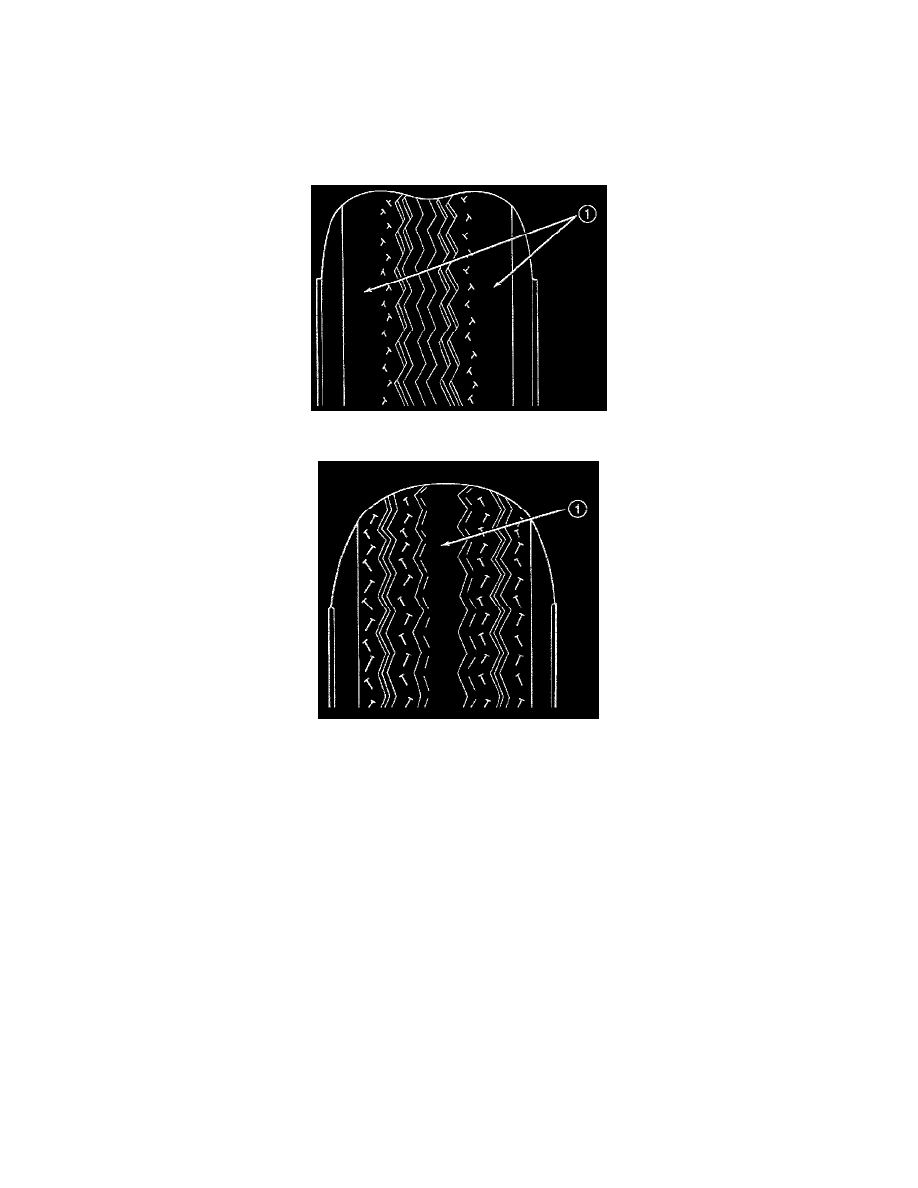Crossfire SRT-6 V6-3.2L SC VIN N (2005)

Z-rated tires are optimized for performance driving and may provide slightly reduced ride comfort, increased tire noise and substantially increased
tread wear compared to all-season tires.
TIRE INFLATION PRESSURES
WARNING: OVER- OR UNDER-INFLATED TIRES CAN AFFECT VEHICLE HANDLING AND TREAD WEAR. THIS MAY CAUSE
THE TIRE TO FAIL SUDDENLY, RESULTING IN LOSS OF VEHICLE CONTROL.
Under-inflation will cause rapid shoulder wear (1), tire flexing, and possible tire failure.
Over-inflation will cause rapid center wear (1) and loss of the tire's ability to cushion shocks.
Improper inflation can cause:
-
Uneven wear patterns
-
Reduced tread life
-
Reduced fuel economy
-
Unsatisfactory ride
-
Vehicle drift
For proper tire pressure specification refer to the Tire Inflation Pressure Chart provided with the vehicle's Owner's Manual. A Certification Label on
the driver's side door pillar provides the minimum tire and rim size for the vehicle. The label also lists the cold inflation pressure for these tires at full
load operation.
Tire pressures have been chosen to provide safe operation, vehicle stability, and a smooth ride. Tire pressure should be checked cold once a month.
Tire pressure decreases as the ambient temperature drops. Check tire pressure frequently when ambient temperature varies widely.
Tire inflation pressures are cold inflation pressure. The vehicle must sit for at least 3 hours to obtain the correct cold inflation pressure reading, or be
driven less than one mile after sitting for 3 hours. Tire inflation pressures may increase from 2 to 6 pounds per square inch (psi) during operation.
Do not reduce this normal pressure build-up.
TIRE PRESSURE FOR HIGH SPEED
Where speed limits allow the vehicle to be driven at high speeds, correct tire inflation pressure is very important. For speeds up to and including 120
km/h (75 mph), tires must be inflated to the pressures shown on the tire placard. For continuous speeds in excess of 120 km/h (75 mph), tires must be
inflated to the maximum pressure specified on the tire sidewall.
